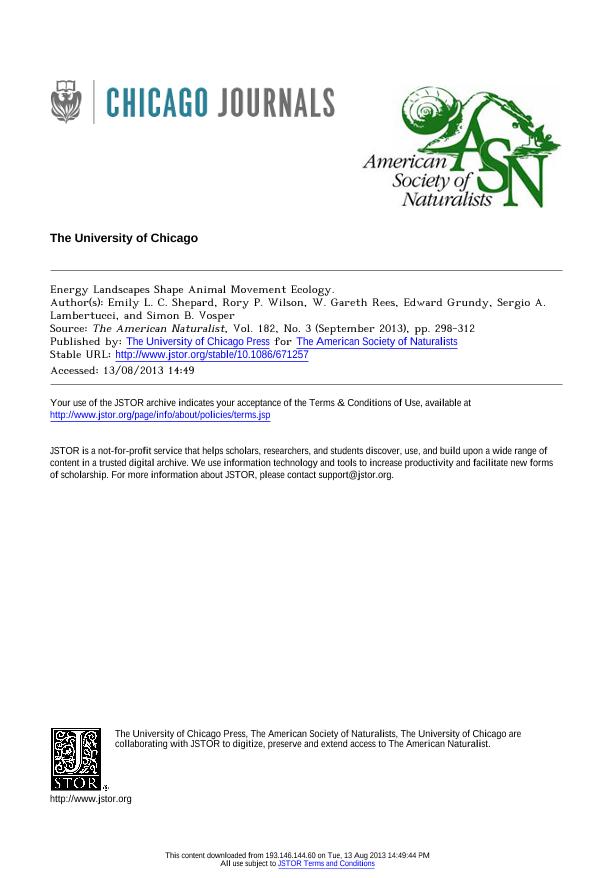Artículo
Energy landscapes shape animal movement ecology
Shepard, Emily L. C.; Wilson, Rory P.; Rees, W. Gareth; Grundy, Edward; Lambertucci, Sergio Agustin ; Vosper, Simon B.
; Vosper, Simon B.
 ; Vosper, Simon B.
; Vosper, Simon B.
Fecha de publicación:
09/2013
Editorial:
University Of Chicago Press
Revista:
American Naturalist
ISSN:
0003-0147
Idioma:
Inglés
Tipo de recurso:
Artículo publicado
Clasificación temática:
Resumen
The metabolic costs of animal movement have been studied extensively under laboratory conditions, although frequently these are a poor approximation of the costs of operating in the natural, heterogeneous environment. Construction of “energy landscapes,” which relate animal locality to the cost of transport, can clarify whether, to what extent, and how movement properties are attributable to environmental heterogeneity. Although behavioral responses to aspects of the energy landscape are well documented in some fields (notably, the selection of tailwinds by aerial migrants) and scales (typically large), the principles of the energy landscape extend across habitat types and spatial scales. We provide a brief synthesis of the mechanisms by which environmentally driven changes in the cost of transport can modulate the behavioral ecology of animal movement in different media, develop example cost functions for movement in heterogeneous environments, present methods for visualizing these energy landscapes, and derive specific predictions of expected outcomes from individual- to population- and species-level processes. Animals modulate a suite of movement parameters (e.g., route, speed, timing of movement, and tortuosity) in relation to the energy landscape, with the nature of their response being related to the energy savings available. Overall, variation in movement costs influences the quality of habitat patches and causes nonrandom movement of individuals between them. This can provide spatial and/or temporal structure to a range of population- and species-level processes, ultimately including gene flow. Advances in animal-attached technology and geographic information systems are opening up new avenues for measuring and mapping energy landscapes that are likely to provide new insight into their influence in animal ecology.
Palabras clave:
Energy Landscapes
,
Animal Movement
,
Cost of Transport
,
Biotelemetry
Archivos asociados
Licencia
Identificadores
Colecciones
Articulos(INIBIOMA)
Articulos de INST. DE INVEST.EN BIODIVERSIDAD Y MEDIOAMBIENTE
Articulos de INST. DE INVEST.EN BIODIVERSIDAD Y MEDIOAMBIENTE
Citación
Shepard, Emily L. C.; Wilson, Rory P.; Rees, W. Gareth; Grundy, Edward; Lambertucci, Sergio Agustin; et al.; Energy landscapes shape animal movement ecology; University Of Chicago Press; American Naturalist; 182; 3; 9-2013; 298-312
Compartir
Altmétricas



